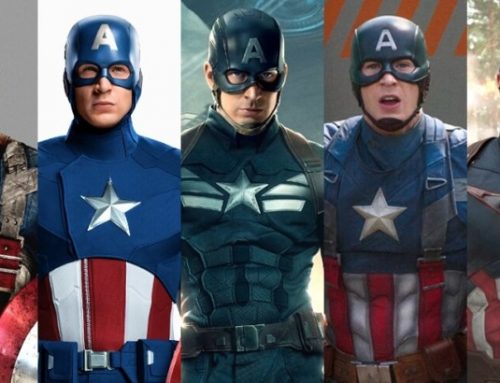The “Star Power” theory of damage reduction in copyright infringement actions
Most consumers instantly recognize brand names such as Coca-Cola®, Nabisco®, Frito-Lay®, and Sony®. As a result of their prior purchasing experience with these brands, a consumer is much more likely to purchase a new brand of cookies bearing the Nabisco®® label than they are a bag of “Fred’s” cookies. This phenomenon is generally  known as brand name impact, or brand name recognition, and is the essence of trademark law.
known as brand name impact, or brand name recognition, and is the essence of trademark law.
When applied to the entertainment industry, an artist’s brand name impact is often referred to as “star power.” More specifically, star power refers to that portion of an artist’s earnings generated by a particular entertainment product which can be attributed to the entertainer’s success, fame, and the expectations of the artist’s fan base, as opposed to the specific content of the particular entertainment product, e.g., a musical composition. The theory is that a large percentage of consumers who purchase a popular artist’s entertainment product do so on the basis of the artist’s reputation, and on their past experience with that artist, rather than on a preference for any one particular song on that artist’s latest release.
The more astute reader may now be wondering how this principle applies in a copyright infringement action. The answer lies in the text of §504 of the Copyright Act, which deals with the calculation of actual damages in a copyright infringement action. The plaintiff, if he or she proves liability, is “required to present proof only of the infringer’s gross revenue.” Once the gross revenue is established, the burden shifts to the defendant infringer, who is required — and this is where it gets tricky — “to prove his or her deductible expenses and the elements of profit attributable to factors other than the copyrighted work.” 17 U.S.C. 504(b) (emphasis added).
Star power is one of the more important “elements of profit attributable to factors other than the copyrighted work” used by defendant-artists who have significant “brand name impact” to reduce the amount of damages to be awarded in a successful copyright infringement action against them. If the jury finds, for example, that the actual damages in a copyright infringement action involving an internationally known artist total $1 million, and further finds that fifty percent of the profits generated by the infringing song are attributable to the artist’s “star power,” then the copyright owner would only be entitled to $500,000.
One of the first applications of this sort of reduction for star power of an entertainer was in the case involving George Harrison’s subconscious infringement of the Chaffon’s 1963 classic hit He’s So Fine with his equally successful composition, My Sweet Lord. For more information, see, ABKCO Music, Inc. v. Harrisongs Music, Ltd. (1981, SD NY) 508 F Supp 798 (apparently 1909 Act), mod on other grounds, and remanded (CA2 NY) 722 F2d 988, 221 USPQ 490, later proceeding on other grounds (CA2 NY) 841 F2d 494. In that case, the court held that 75 percent of the success of the infringing song was attributable to the plagiarized music, while 25 percent was attributable to other factors including, among other things, the popularity and stature of Harrison in the pop music industry.
In order to calculate the percentage of sales attributable to star power, a defendant usually will hire a damages expert to apply elaborate formulas to the sales data of the infringing artist in order to derive an applicable percentage. The expert may, for example, perform nonlinear regression analysis to compare the sales of the more recent album containing the infringing musical composition to the sales from one of the artist’s earlier album, usually the first release, over an extended period of time (as many as 4-5 years). We’ll call this percentage the “Star Power Percentage.”
So, you might think to yourself, the calculation is simple. If a court determines that the gross profits from sales of the infringing album are 2 million dollars, and that the Star Power Percentage is 50%, then the copyright owner would be entitled to 1 million dollars, right? Wrong!. Just when you think you’ve got the trick figured out, the infringing artist has one more trick up the sleeve!
Instead of applying that Star Power Percentage to the gross profits from the sale of albums containing the infringing composition, the defendant will apportion out only those portions of profits that are directly attributable to the infringed musical composition and then apply the Star Power Percentage only to that apportionment. Again, you might think this calculation is straight forward. If there are 10 songs on the album, one manner of calculation would be to apply the Star Power Percentage to 1/10th of the earnings from the album. In the example given, 1/10th of 2 million is $200,000, and the plaintiff would be awarded 50% of that, or $100,000. Wrong again!
A typical damages expert will base the apportionment of earnings from an album on the performance royalties generated by each musical composition. The expert will apply the respective performance royalty total for each musical composition to the total earnings to derive the allocated percentage of profits attributable to each individual musical composition. If the infringing song happens to be a very popular song, that might be beneficial to the plaintiff. If, however, the infringing song is less popular, it probably means that the Star Power Percentage will be applied to less than 1/10th of the total earnings from an album containing 10 songs.
The good news is that the infringer bears the burden of proving these types of deductions. One factor that weighs heavily in favor of a lesser deduction is the degree of popularity of the infringing musical composition. If the infringing musical composition is extremely popular, a good argument could be made, through the use of plaintiff’s expert testimony, that the musical composition itself contributed a great deal to the success of the album.
Another important factor is the popularity of the musical composition that has been infringed. In the Harrison case, for example, He’s So Fine was an extremely successful musical composition in 1963. The inference is that even though George Harrison’s star power may have attributed some percentage to the sales of the infringing composition, the familiarity of the melody could arguably be said to have contributed as much or more to the sales and, therefore, the effects of star power are diminished.
When calculating damages, the defendant will most certainly make use of every means available to reduce the amount of damages to which the songwriter/plaintiff is entitled. The songwriter, therefore, should make use of a good copyright infringement attorney and a reputable musicologist to make certain that his or her rights are protected and to make certain that he or she gets the full extent of the damages to which he or she is entitled.





